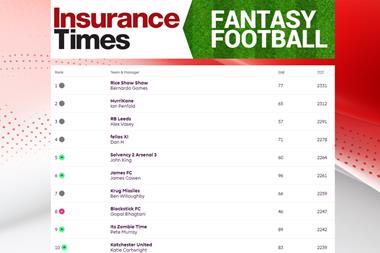Pearson Ham’s director of insurance pricing states that a ‘fine balance needs to be struck between inflation, competition, demand and growth’
Further price increases for motor cover is still required to restore premiums to pre-pandemic levels, according to Pearson Ham’s director of insurance pricing, Stephen Kennedy.
Speaking during the firm’s Quarterly insurance price index – Q4 2022 webinar on 11 January 2023, Kennedy noted that prices for motor insurance at the end of 2022 remained 1.5% lower than they were at the beginning of 2020, suggesting that “further premium for inflation is still needed, regardless of the increase that we’ve seen in claims inflation more recently”.
This motor pricing deficit was similarly noted by investment banking company Jefferies in its UK insurance equity research bulletin, published on 10 January 2023. In this document, the firm stated that the overall insurance market needs to post a further 5% increase in premiums over and above claims inflation to return to 2019 underwriting margins.

Jefferies estimated that premiums have increased by 12% since 2019, however claims costs are 18% higher.
Claims inflation, according to Ecclesiastical’s claims director Jeremy Trott, is the “increased pressure over and above normal inflation that drives up costs in terms of the settlement of claims”.
Trott shared this explanation as part of a podcast titled Covered in 15 – What is claims inflation and how is it impacting clients, which went live on 5 September 2022.
Pricing peaks and troughs
Throughout 2022, Pearson Ham’s data showed that motor insurance prices climbed 13.5%.
This was partly driven by regulatory changes – including the FCA’s ban on dual pricing, effective from January 2022 – which saw insurers make large premium increases last January as firms rebalanced renewal and new business prices.
March, April and May 2022 was a period of intense competition in the UK motor market as prices remained relatively low – this was driven by the launch of new products, particularly cheaper essentials or economy brands, reduced levels of cover and increased compulsory excesses.
However, motor premiums did not remain low for long as inflationary pressure - mixed with supply chain issues, a lack of parts for repairs and labour shortages - pushed prices back up.
Between July and September 2022, motor cover prices rose by 2.3% - equating to a premium increase of 6.4% overall in H2 2022.
Combined contents and building cover price increases were ahead of motor price fluctuations, however, with a reported increase of 2.9% in Q4 2022 and a 3% rise over the past six months.
Prices for contents insurance alone increased by 2.3% in Q4 2022, with the largest uptick being observed in December.
For home insurance overall, premium prices increased by around 10% between January and December 2022.
Seeking equilibrium
Read: Direct Line navigating further motor claims inflation
Read: Direct Line predicts home and commercial lines claims of £90m
Explore more news analysis here and discover more risk managment articles here.
Looking ahead at 2023, Kennedy said: “As prices rise to meet the challenge of claims inflation, we may see the cycle turn again and rates reducing later in the year.”
Kennedy predicted that home claims inflation will rise to around 10% in the first two quarters of 2023, but that this could reduce to approximately 5% by the end of the year. He also estimated similar claims inflation movements in motor - following a large increase in Q3 or H1 2023 - but admitted that this is a “difficult one to call right now”.
He added: “There’s a fine balance that needs to be struck between inflation, competition, demand and growth.
“We can expect pricing to continue to be interesting – we are not going to be bored in 2023 with what’s happening in general insurance pricing.”












































No comments yet